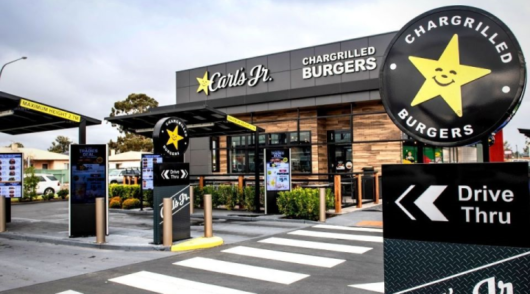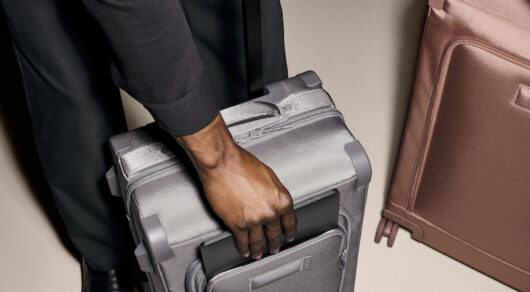The years are the ’90s and early 2000s. Denim and preppiness with a professional edge are ruling the fashion world, especially for millennials, who were then in their junior high, high school, college, and first-job years. Three retailers in particular seemed to ‘just get it’ when it comes to this audience: Gap, Abercrombie & Fitch, and J Crew. Then, suddenly, a combination of The Great Recession, changing style preferences, and an urgent need for omnichannel operations caused this mig
is mighty power trio to fall towards the bottom of the retail hierarchy. Over the last year to seven years, however, these brands have launched impressive comeback strategies, bringing them back onto consumers’ radars. The trifecta’s respective turnarounds, combined with a few economic and cultural factors, are ushering back in an era of success for nostalgic, millennial-influenced mid-price retail.
Many company’s decisions to return to the office and the world opening back up to embrace life outside the home have created a need for a wardrobe beyond athleisure. Additionally, with the rise of Y2K fashion led by millennial and Gen Z consumers’ nostalgia for the ’90s and early 2000s, there couldn’t be a better time for Gap, Abercrombie & Fitch, and J Crew to recapture the hearts and wallets of their former fans, while recruiting new ones. These three brands have been wise in leveraging this favourable environment and have been making intelligent moves to get back on top of the retail ladder.
How Gap is bouncing back
Gap had been attempting a turnaround for many years, but the most effective efforts began in the summer of 2023, when the company announced Richard Dickson, of Mattel success, as its new CEO.
From the start, Dickson made it clear that he was going to prioritise the brand’s sense of purpose, leverage its iconic heritage and, most importantly, get the product right.
C-suite shake-ups always make headlines, but they don’t always make for actual, directional change. Since Dickson’s debut at the company, however, Gap brands have adopted more focused and intentional strategies for assortment, discounting and pricing. The discounting and pricing are working for clear reasons, but the assortments are also a demonstration of urgently needed common sense. Gap had been suffering especially from a product offering that struggled to stay on trend.
To ensure Gap’s assortment was not just on trend, but future-forward, Dickson hired esteemed designer Zac Posen as the brand’s creative director. Just like with C-suite titles, changing creative directors can occasionally be more symbolic than an actual turning of the tides.
Under Posen, however, Gap’s assortment has already had a massive refresh. Just a few weeks prior to his appointment to the team, Gap made another visionary hire, sneaker designer and collector Sean Wotherspoon. Serving as Gap’s global vintage curator, Wotherspoon will oversee the brand’s reissue range, alongside Posen.
Other examples of Gap’s elevated fashion mission efforts include collaborations with aspirational apparel brands like Dôen and Cult Gaia. Between those brands, Posen and Wotherspoon, the message is clearly that Gap is now fully tuned in to which labels and spokespeople both align with the retailer and will help propel it further. Relatedly, Gen Z
and millennial tastemakers Tyla and Troye Sivan are now Gap models and brand ambassadors, marking the label’s acknowledgment of what’s what in the social sphere.
How J Crew is leading its turnaround strategy
Signature preppy brand J Crew appears poised to experience a comeback story similar to Gap’s. One sign of this is the revival of its iconic print catalog this year.
The J Crew catalog had been dormant for seven years but had formerly been a beloved sign of seasons changing for millennial high school and college students. Much like Gap, the retailer served as a great success story before falling on hard times.
The brand lost an understanding of who made up its core audience. It went too high-priced and high fashion, which, paired with a series of unfortunate financial decisions, brought the brand to bankruptcy in 2020. Just a few months later, J Crew exited bankruptcy, and through a refocus on its trademark preppy style and a return to mid-range pricing, it has been making a noticeable turnaround.
The restoration of the catalog is a key indication that marketing efforts are also heavily underway, but there are certainly more opportunities for improvement to come for the iconic prep wear retailer.
How Abercrombie & Fitch did a 180-degree switch
While J Crew is in the beginning stages of its turnaround, and Gap is just a few steps ahead of J Crew, Abercrombie & Fitch has been flying high for roughly five years now, after the effects of its 2017 CEO turnover.
Similar to Gap, A&F changed its assortment to more closely resonate with its target customers. The brand shifted far away from its previous history of controversial and xenophobic merchandising, to a more timeless yet trendy offering of staple and statement pieces. The retailer exhibited self-awareness by ‘growing up’ with its customers, selling life-stage-oriented apparel for the business professional, bride or social butterfly.
In addition to overhauling its product, the brand also focused on fully refreshing its values. A&F had a notoriously sordid past when it came to its marketing strategy and leadership history, so broadcasting its commitment to a positive, inclusive and compassionate brand image was pivotal in its record growth.
What can other brands take away from these brands’ come-ups?
Though these three retailers are in various stages of turning things around, they share an extensive list of common lessons for other brands needing to change their fortunes.
All three retailers made leadership switches with noteworthy implications. The newly appointed executives recruited to Gap, J Crew, and A&F swiftly instituted meaningful changes. They were obviously familiar with how repetition can kill off an existing brand’s ‘cool factor’.
Secondly, Gap and A&F’s turnaround stories demonstrate the utmost importance of getting the product right. Pricing and marketing are completely irrelevant if they’re attached to an offer that garners no interest.
Lastly, nostalgia and heritage are extremely powerful to lean into, but an innovative digital strategy is table stakes in today’s shopping world. J Crew’s catalog hosts QR code links to drive app downloads, A&F has a robust digital site and app functionalities for its highly connected consumers, and Gap has been noticeably putting more energy into its
digital merchandising. Retail can be both nostalgic and innovative at once, and for the younger generations growing in spending power, this merged identity is crucial.
Now the question is, who’s next?
My vote is Victoria’s Secret.
This story first appeared in the December 2024 issue of Inside Retail US.







